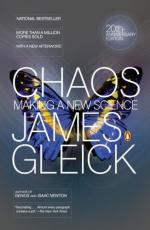
|
Chapters 1-2
1. Who is quoted in Chapter 1, "The Butterfly Effect" as saying "Physicists like to think that all you have to do is say, these are the conditions, now what happens next?"
(a) Stephen Spender.
(b) Thomas S. Kuhn.
(c) Edward Lorenz.
(d) Richard Feynman.
2. When was Edward Lorenz born?
(a) 1921.
(b) 1917.
(c) 1914.
(d) 1924.
3. Where was Edward Lorenz born?
(a) Boston, Massachusetts.
(b) West Hartford, Connecticut.
(c) Bangor, Maine.
(d) Atlantic City, New Jersey.
4. What refers to the sensitive dependence on initial conditions; where a small change at one place in a nonlinear system can result in large differences to a later state?
(a) Pufferfish effect.
(b) Butterfly effect.
(c) Hummingbird effect.
(d) Kangaroo effect.
5. In what year did Edward Lorenz create a weather simulator as described in Chapter 1, "The Butterfly Effect"?
(a) 1951.
(b) 1966.
(c) 1948.
(d) 1960.
6. What studies the behavior of dynamical systems that are highly sensitive to initial conditions?
(a) Chaos theory.
(b) Deterministic Nonperiodic Flow.
(c) Butterfly effect.
(d) Nonlinear system.
(read all 180 Multiple Choice Questions and Answers)
|
This section contains 4,378 words (approx. 15 pages at 300 words per page) |

|




